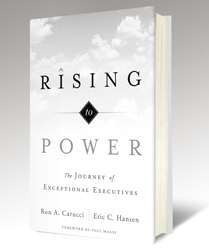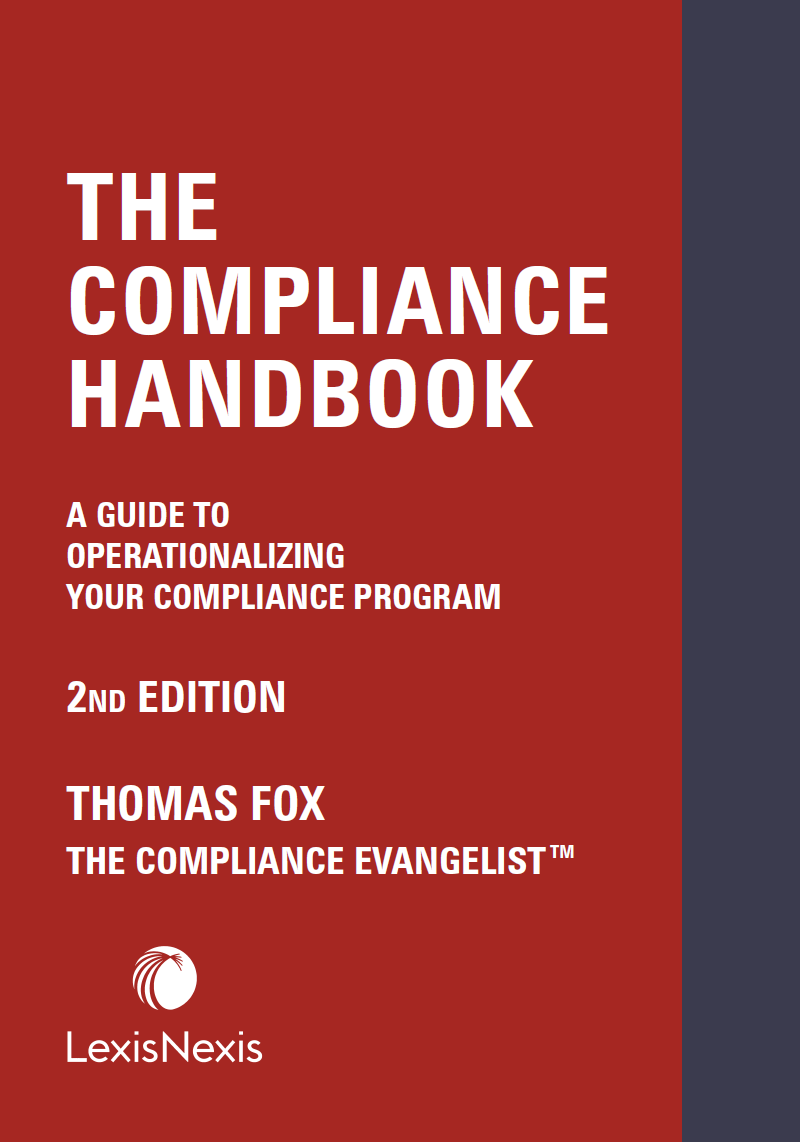Rising to Power; The Journey of Exceptional Executives
Ron A. Carucci
It’s been known for decades that failure rates among transitioning executives are too high, leaving exorbitant costs, damaged organizations and careers behind. But little has changed in the way organizations prepare leaders to assume executive positions.
It doesn’t have to be this way.
Our ground-breaking ten-year longitudinal study and approach offer a comprehensive look at how successful executives transition to the highest altitudes of their organization, and thrive once there.
Organizations are making strategic bets to drive growth.
Part of the bet includes the executives entrusted with leading the way to success.
Accepting our 50-50 odds as “the best it gets” is no longer an option. Pushing for something better isn’t just possible….it’s necessary.


Failure with a side order of good intentions: Even the best leaders stumble
Nobody’s shocked when someone who’s an obvious idiot flames out in a job they were never cut out for. But more than 50% of executives still fail within the first 18 months of their appointment to a higher altitude – and many of them are the good ones. What accounts for so many promising young executives reaching broader assignments and stumbling once there?
Ten years of research, more than 2700 interviews and surveys have revealed consistent patterns of tripwires that cause even the best to fall. Here are four common traps well-intended executives unwittingly step into.
The mandate bait Many executives arrive with a perceived mandate to repeat past success –“you’ve turned around situations like this before and that’s what we need.” Instead of looking realistically at the current situation, executives reach back to their bag of tricks that “worked before” and begin slapping those formulas on the new environment without contextualization. Organ rejection sets in as the leader’s diagnosis turns into an indictment of the culture’s inadequacies. The organization more firmly resists, resenting the executive’s ignorance of what will and won’t work. Avoiding this trap requires deep knowledge of context – reading it and adapting to it. Hit the ground learning, not running.
Stakeholder blindness Deep relationships with new peers, sometimes former bosses, new direct reports, sometimes previous peers, and new bosses, are most critical at the highest levels of organizations. But given that most rising executives distinguish themselves through individualism, they painfully underestimate how much they need others when they get to the top. Forming mutual partnerships with those who most hold the keys to your success, and whose success you can influence, is critical. Connections formed with deep trust, investment, and openness are the best guardian against this trap. To transform an organization, you have to let it transform you.
Altitude distortions How your messages are received, and how messages arrive to you, change dramatically when you near the organization’s top. Assume you now have a megaphone strapped to you 24/7. Everything you say and do is amplified and open to interpretations far from your intentions. Similarly, information you get is now sifted. People sanitize data and tell you what they think you want to hear. Unable to adapt to these distortions, many executives regain their footing by reverting to the more tangible, less ambiguous work from their old job. Executive breadth is the requirement for avoiding this trap – having the broadest possible knowledge of your organization, how its pieces fit together, especially of how to bridge the organization’s seams where conflicts are intensified. Broader perspectives that add value lower level leaders can’t, helps new executives confidently orient to realities of higher altitudes. Rise above the fray, and stay there.
Power failure Most executives struggle with the larger sphere of positional, informational and relational power afforded them by bigger jobs. While tabloids are filled with leaders who abuse that power with indulgent self-interest, the more common power failure is abdication. Executives are so fearful of wielding power that they avoid using it, especially when the risks seem high. Indecisiveness, accommodating mediocre performance, co-dependent relationships with others to hide behind, and irresponsible uses of confidential information are just some of the symptoms of a leader who has abdicated their power. Self-protection, not self-service, is often the driver behind such fearful leaders. What they fail to grasp is the importance of the larger good their power is intended to serve. At the top of the organization, your ability to right injustices, allocate resources fairly, provide access to opportunity, focus people on limited priorities, and invest in promising talent are all the privileges that accompany power, and failure to exercise it is as much an abuse of the privilege as exploiting it for personal gain. Embracing the importance of executive choice is the custodian against power failure. Constructing choices with data, appropriate inclusion of others, clear values, and full appreciation of painful trade-offs is an executive’s privileged prerogative. Executive power is intended to serve others, not hide behind.
Landmines in the field of executive leadership are plentiful, but no need to go tap-dancing in those fields unprepared. Translate your noble intentions into success by thoughtfully preparing yourself for the realities of executive leadership and beat the odds against failure.

Ron is a seasoned consultant with more than 25 years of experience working with CEOs and senior executives of organizations ranging from Fortune 50 to start-up in pursuit of transformational change. His consulting has taken him to more than 20 different countries on 4 continents. He has consulted to some of the world’s most influential CEOs and executives on issues ranging from strategy to organization to leadership. He has worked extensively in the health sciences, bio tech, and healthcare provider sectors, and in the technology, consumer products and retail food and beverage industries. He has led work on several large-scale merger integrations and subsequent culture change initiatives, and enterprise level global organizational redesigns. He has been featured in HBR, Fortune, Business Insider, CNBC, Thought Leaders, Business Week, and Bloomberg. He is the best-selling author of 8 books, including the most recent, “Rising to Power, The Journey of Exceptional Executives, with Eric Hansen (2014).






















